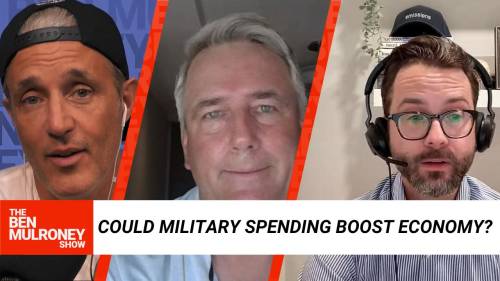In a dramatic shift from decades of restrained defense spending, Canada stands at the precipice of a military funding revolution that could reverberate throughout the national economy. Prime Minister Justin Trudeau’s government has signaled unprecedented increases to the defense budget, potentially injecting billions into a sector long overshadowed by other national priorities.
“We’re looking at a complete recalibration of Canada’s military spending philosophy,” said Dr. Amelia Richardson, defense economics specialist at the Royal Military College. “This isn’t merely about meeting NATO obligations—it’s about recognizing defense spending as an economic multiplier.”
The proposed increases would push Canada closer to NATO’s benchmark of 2% GDP allocation for defense—a target that has eluded successive Canadian governments. Currently hovering around 1.3%, Canada’s military expenditure ranks among the lower tier of NATO allies, despite possessing the world’s second-largest territorial expanse.
Economic analysts project that increased military procurement could generate thousands of high-skilled manufacturing jobs across multiple provinces. The Canadian defense industry currently employs approximately 60,000 workers and contributes over $10 billion annually to the economy—figures that could surge dramatically under expanded spending plans.
“Defense spending is unique in that it creates immediate jobs while simultaneously investing in technological innovation with civilian applications,” notes Martin Leblanc, senior economist at the Conference Board of Canada. “When we invest in advanced radar systems or communications technology, those innovations eventually filter into commercial sectors.”
Ontario and Quebec stand to benefit substantially, with their established aerospace and shipbuilding sectors positioned to secure major contracts. However, the economic impacts would likely extend nationally, with specialized component manufacturing potentially revitalizing smaller industrial centers across the Prairies and Atlantic Canada.
Defense Minister Anita Anand recently emphasized this economic dimension, stating: “When we strengthen our military capabilities, we’re not just enhancing national security—we’re investing in Canadian innovation, creating skilled jobs, and building industrial capacity that serves our broader economic interests.”
Critics, however, question whether military spending represents the most efficient economic stimulus. “Dollar for dollar, investments in healthcare, education, or green infrastructure typically generate more widespread economic benefits than defense,” argues Dr. Paul Sinclair of the Fraser Institute. “We need to ask whether this represents optimal allocation of limited fiscal resources.”
The timing of this spending recalibration coincides with growing geopolitical instability and Canada’s increasingly assertive foreign policy stance, particularly regarding Arctic sovereignty and collective defense commitments. These political considerations inevitably shape the economic calculus behind defense allocations.
International comparisons suggest that countries with robust defense industrial bases often experience positive economic spillovers. Sweden, Norway, and Israel have leveraged defense innovation to foster thriving technology sectors while maintaining strong social safety nets—a model some Canadian policymakers now appear eager to emulate.
As Parliament prepares to debate the upcoming federal budget, Canadians face fundamental questions about national priorities. Does increased military spending represent a pragmatic economic investment or a diversion from more pressing social needs? In an era of fiscal constraints and evolving security challenges, how do we strike the optimal balance between defense imperatives and broader economic development goals?























